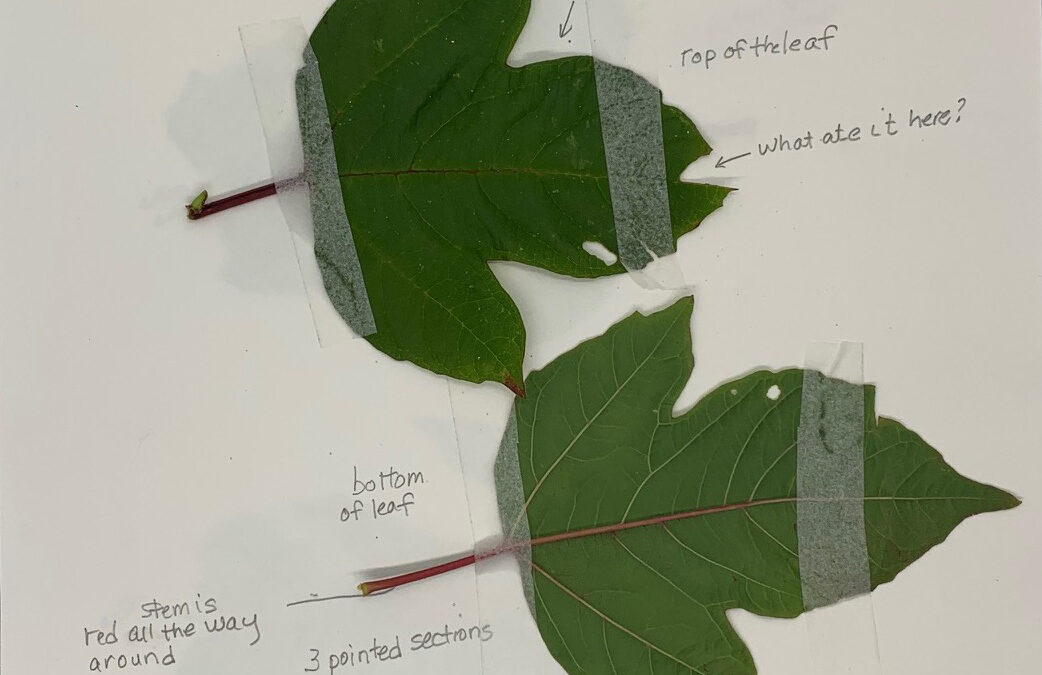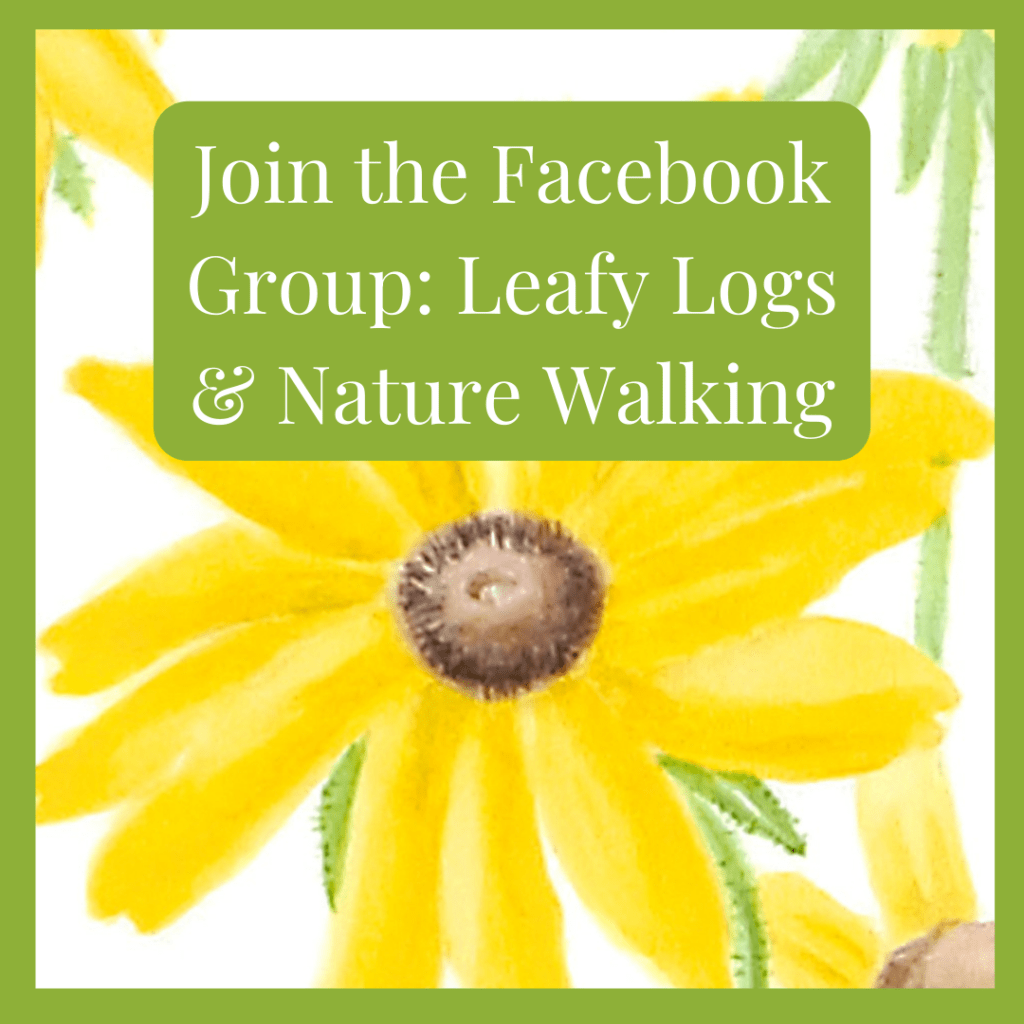1. Grab your back pack of Nature Walk Items. Where are you planning to walk today? Down the street? Through a nearby park? Around a field?
2. Before you leave make your Title Page. Put your title (You can call it simply “Nature Walk,” or something more creative, if you have an idea you would like to use). Put your name below the title and the year you are starting.
3. Today you are just getting started. So put the date at the top of your second page. Make a short note about the weather. What time of day is it? Is it sunny or cloudy? Do you know the approximate temperature? Where are you walking? Are you on a street? In a park? Near a field? Is the field full of weeds or does a farmer have a crop in the field? Is it a sports field? Are there any trees nearby? Be sure to make a record of the details you see.
4. What kind of leaves do you see? Are the leaves on small plants near your feet? On bushes? Or on Trees? You will need 2 leaves from the same plant. Be sure there are at least 8 leaves on the plant, so that if you take 2 away, the plant will still thrive.
5. Carefully pick 2 leaves about the same size. If there is a little stem on the leaf (called a petiole) keep it attached. Is it from a low-growing plant, from a bush or from a tree?

6. Look at the top of the leaf carefully. Is it shiny? What kind of veins does it have? On the top do the veins go in or out? What is the color? What does the edge look like? Do you see any hairs on the leaf?
7. What about the underside? Do the veins here go in or out? Is it different from the top? Why do you think they are different? Is the color the same? What about the edges? Does the bottom part have any hairs? What is the color?
8. Are both sides green? Chlorophyll makes many leaves green. Chlorophyll helps the leaf produce sugar to feed the plant. When this happens the plant takes carbon dioxide inside the leaf and gives offoxygen. You breathe oxygen. Are there enough leaves nearby so that you can breathe better?
9. Save these leaves to your journal page for today. Tape one with the top side showing and tape the second one with the bottom showing. Pencil in your notes and ideas about these leaves. Be sure to answer the questions from #6, #7 and #8 in pencil. If you wish, draw a picture. Try out your colored pencils, or just make a gray pencil drawing.
10. Add your own ideas. Notice things around you. Write down what is interesting to you about where you found the leaves. Look carefully at the veins. Are the veins on the top and on the bottom the same? Make a note next to each leaf. Which sides have veins that stick up? Are they thicker than the veins on the other side? Which ones have veins that seem to sink into the leaf? What about the color? Are the top and the bottom of each leaf the same color? Which side is darker? Which side is lighter? The plant gets some advantage from the difference in the color and texture. What advantage could the leaf and the plant gain from these differences? Which side gets the most sun? Which side gets the least sun? What happens to you when you get a lot of sun on your arm? Could this also happen to leaves? What kinds of shapes do the veins have? Is there one central vein with branching from the center or are there lots of mostly parallel veins? Do you see any hairs on the top or the bottom? What about at the edges?Are there any thorns or prickers on the leaves?
Write down what you see. Perhaps you will want to make some notes about the leaves. Sometimes drawing them is fun. You can trace the leaves and add color and veins and hairs or prickles.
11. By now you must have a favorite leaf. Which one is it? Continue your walk. Perhaps look at other leaves. You are beginning to think like a caterpillar. Caterpillars are very fussy about what they eat. You may like chocolate chip cookies. What about peanut butter cookies? Brownies? Are you a fussy eater, or do you like lots of cookies? Caterpillars are very particular about which leaves they eat. As we take more walks we will find time to talk about caterpillars and some of their favorite foods.


